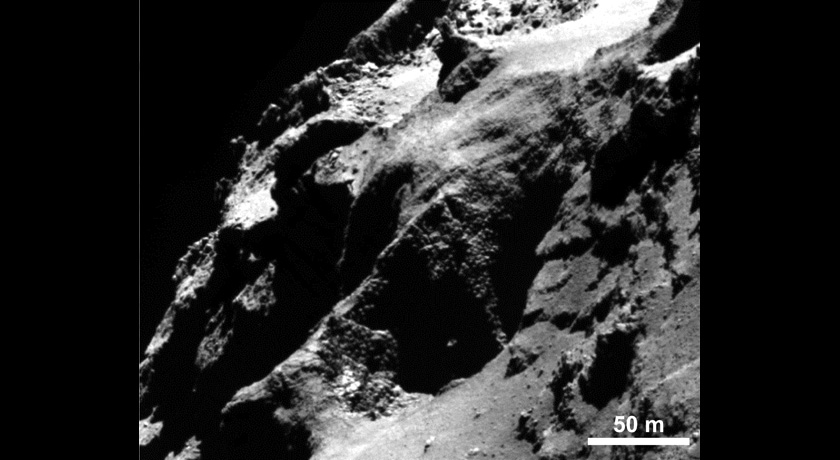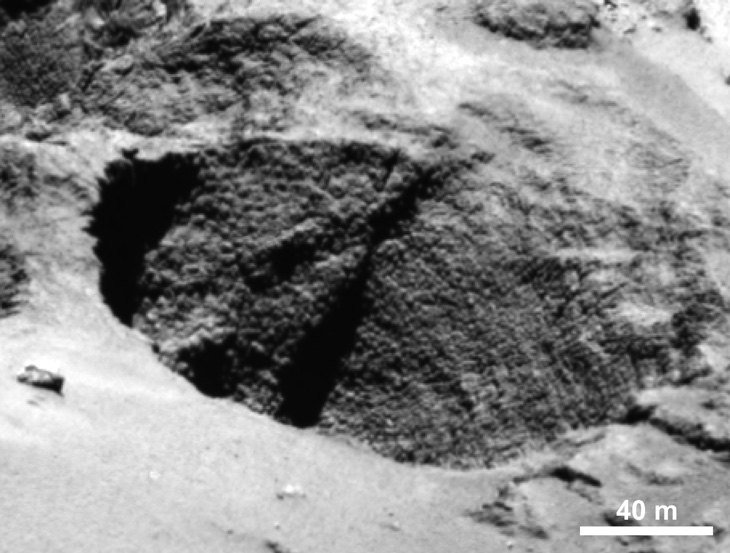Rosetta may have spotted comet’s primordial ingredients
New images reveal 67P’s craggy terrain

PRIMORDIAL SPHERES? These bumps, seen here along a slope on the comet, could be pristine examples of chunks of ice and dust that stuck together in the solar system 4.6 billion years ago to form asteroids, planets and comets.
ESA/Rosetta/MPS for OSIRIS Team MPS/UPD/LAM/IAA/SSO/INTA/UPM/DASP/IDA








